If you’ve ever ordered blackened chicken tenders at a restaurant and wondered, why can’t mine turn out like this at home? I get it. Maybe your seasoning burned instead of blackening, or the tenders came out dry instead of juicy. Oh, I remember those days. But with this foolproof recipe and my perfectly balanced homemade Cajun seasoning you’ll get moist, flavorful tenders every time.
The good news? Blackened chicken tenders are easy to make once you know the right techniques. Pair them with my creamy baked mac and cheese, Southern collard greens, and honey-butter glazed cast iron cornbread.

Ingredient Notes
The secret to moist, flavorful chicken tenders comes down to the right ingredients. Let’s break it down:
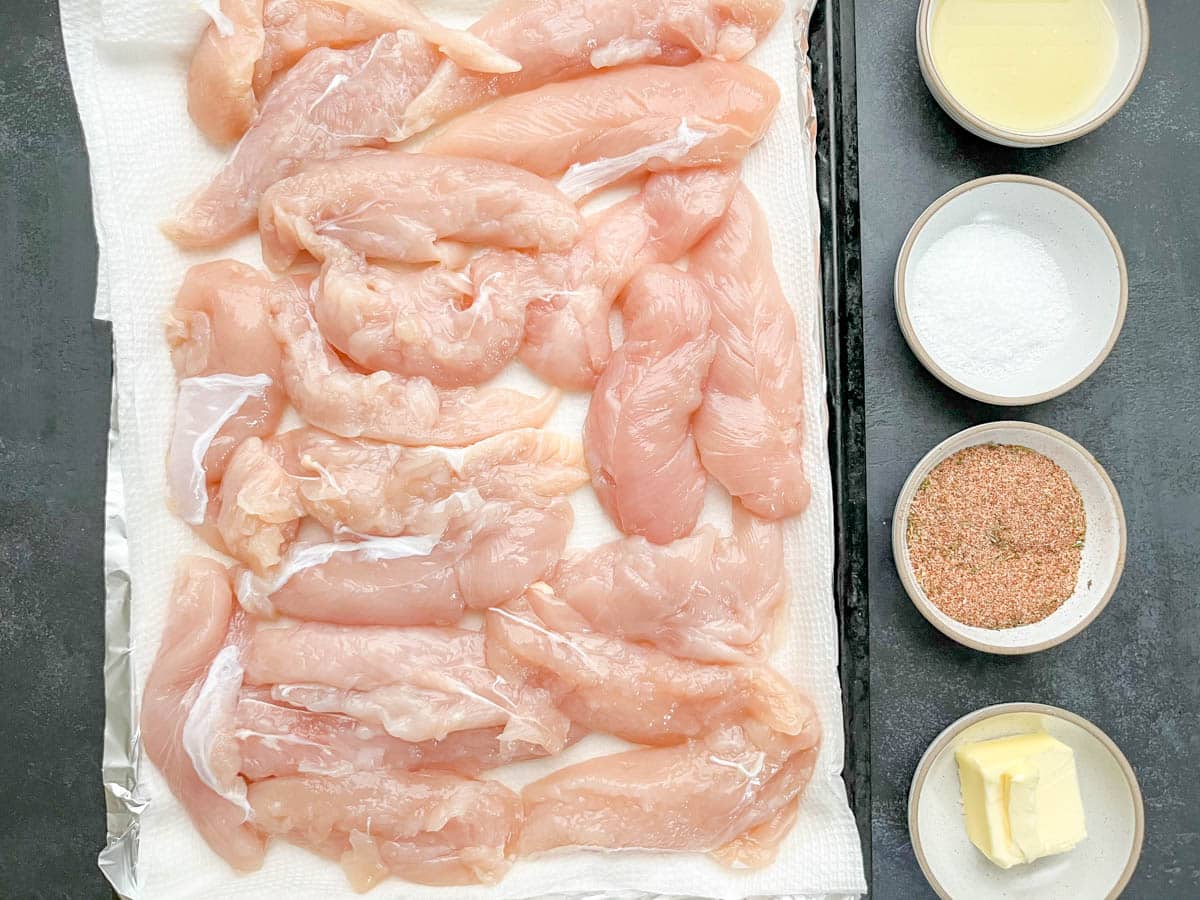
- Brine: Soaking the chicken tenders in a simple saltwater brine (even for just 30 minutes) helps keep them juicy and prevents them from drying out, especially since they cook quickly over high heat. If I have time, I'll soak them for 1 to 2 hours.
- Blackening Seasoning: Simply use my homemade Louisiana Cajun seasoning blend. It has the right balance of smoked paprika, garlic powder, onion powder, thyme, oregano, black pepper, and cayenne. If you prefer it milder, you can reduce the cayenne and red pepper flakes.
- Oil or Butter: I like to use a combination of butter and oil to help develop that signature crust. However, if you want to omit the butter, use a cooking oil with a higher smoke point (like avocado oil) instead.
- Chicken Tenders vs. Chicken Breast: If you only have chicken breasts, you can cut them into strips, but chicken tenderloins cook more evenly and are roughly the same size.
See recipe card for quantities.
Step-by-Step Overview
When making these blackened chicken tenders it's all about high heat, the right seasoning, and quick cooking to lock in juiciness. Follow these simple steps.

- Use kitchen shears to remove the tendon and cartilage from each tenderloin. Check out the video to see exactly how I do it.
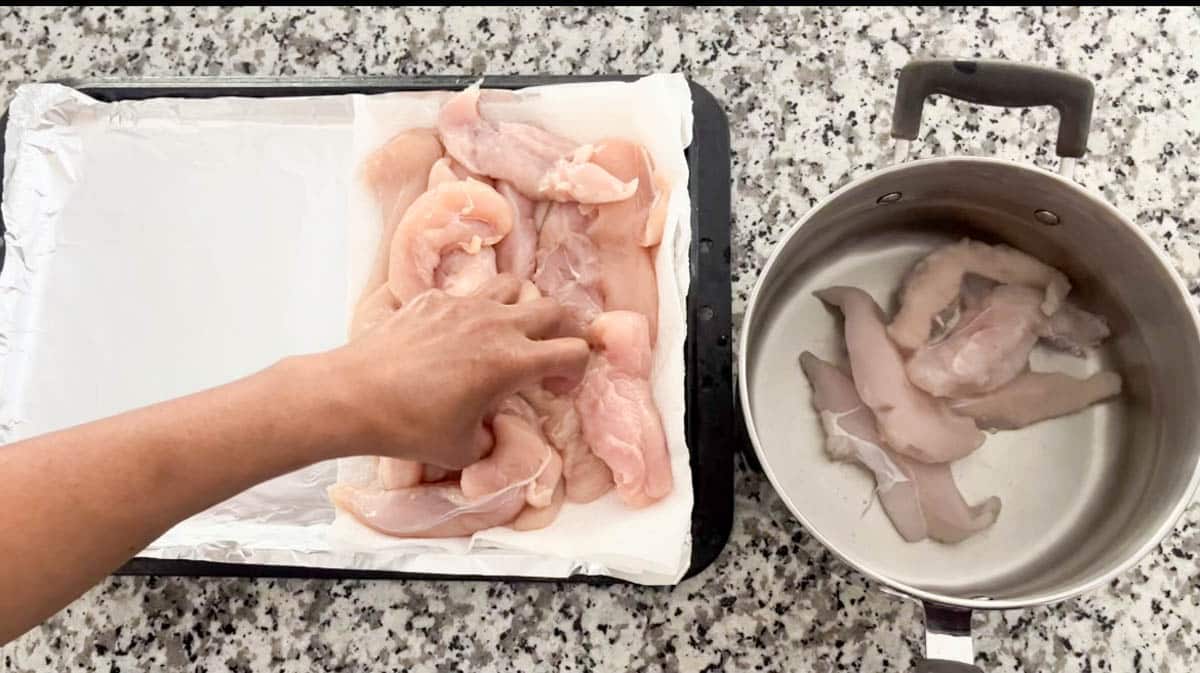
- Soak the chicken tenderloins in a simple saltwater brine to keep them extra moist.

- Drain the saltwater brine and give the chicken a quick rinse.

- Coat them generously with my homemade Cajun spice blend.

- Place the tenderloins in a hot cast iron skillet.

- Sear until a blackened crust forms.

- Take the chicken tenders off the heat and place them on a cooling rack to rest.
Storage and Reheat
Place leftover tenders in an airtight container or a resealable storage bag. Store in the refrigerator for up to 3–4 days.
To reheat, place the tenders on a foil-lined baking sheet and warm them in a 375°F preheated oven until heated through.

Cree's Tips
- Soaking the tenders in a simple saltwater brine for at least 30 minutes helps keep them moist and flavorful, preventing them from drying out during cooking.
- Before seasoning, use a paper towel to remove excess moisture, and don’t be shy about seasoning. A generous even coating is key to getting that signature crust.
- Blackening requires high heat. A cast-iron skillet works best because it holds heat well, but a heavy bottom skillet can also work.
- Melted butter helps create a crispy crust. If you prefer using oil only use one with a higher smoke point, avocado oil is a great alternative. But, do not use olive oil because it doesn't have a high smoke point.
- Cook in batches if needed. Overcrowding can cause the tenders to steam instead of sear, preventing them from developing a proper blackened crust.
- Let the tenders cook undisturbed for about 7 minutes per side to allow the seasoning to form a flavorful crust.
- Sometimes, blackening can create some smoke. To reduce this, turn on your stove’s exhaust fan.
📖 Recipe

Brined Blackened Chicken Tenders (Cajun-Style)
Brined Blackened Chicken Tenders (Cajun-Style)Equipment
- Medium-sized pot or bowl for brining
- Cast Iron Skillet or a heavy bottom skillet
- Baking sheet lined with paper towels to lay tenderloins on
- Paper towels to pat dry the chicken tenderloins
- Measuring spoons
- Tongs
Ingredients
- 2.5 lbs chicken tenderloins
- 1.5 tablespoon Cajun seasoning
- ½ tablespoon kosher salt
- 2 tablespoon avocado oil
- 2 tablespoon unsalted butter (or ghee (clarified butter))
Instructions
- Brine the chicken (Optional, but Recommended)-In a medium-sized pot or large bowl, fill it a little more than half full with lukewarm water and add ¼ cup of kosher salt. Stir until salt dissolves. Submerge the chicken tenders and let them soak for at least 30 minutes to 1 hour. Drain and pat dry with paper towels.
- Evenly coat both sides of each chicken tender with Cajun seasoning, pressing it in to ensure the seasoning adheres to the tender.
- Heat a cast-iron skillet or heavy-bottomed pan over high heat for about 2 minutes until hot. Heat 2 tablespoons of avocado oil and 2 tablespoons of butter in the skillet.
- Place the seasoned chicken tenders in the pan in a single layer, making sure they don’t overlap. Cook undisturbed for 6-7 minutes or until a dark crust forms. Flip the tenders and cook for another 6-7 minutes or until the internal temperature reaches 165°F. If they are browning too quickly, reduce the heat slightly.
- Remove the tenders from the skillet and transfer to a cooling rack. Serve immediately with your favorite dipping sauce, fries, salad, or mac and cheese.
Video
Notes
-
- Soaking the tenders in a simple saltwater brine for at least 30 minutes helps keep them moist and flavorful, preventing them from drying out during cooking.
- Before seasoning, use a paper towel to remove excess moisture, and don’t be shy about seasoning. A generous even coating is key to getting that signature crust.
- Blackening requires high heat. A cast-iron skillet works best because it holds heat well, but a heavy bottom skillet can also work.
- Melted butter helps create a crispy crust. If you prefer using oil only use one with a higher smoke point, avocado oil is a great alternative. But, do not use olive oil because it doesn't have a high smoke point.
- Cook in batches if needed. Overcrowding can cause the tenders to steam instead of sear, preventing them from developing a proper blackened crust.
- Let the tenders cook undisturbed for about 7 minutes per side to allow the seasoning to form a flavorful crust.
- Sometimes, blackening can create some smoke. To reduce this, turn on your stove’s exhaust fan.
Nutrition
Nutrition Disclaimer
Nutritional information is an estimate provided by an online nutrition calculator. For the most accurate results, we recommend calculating the nutritional information using the specific ingredients and brands you use.

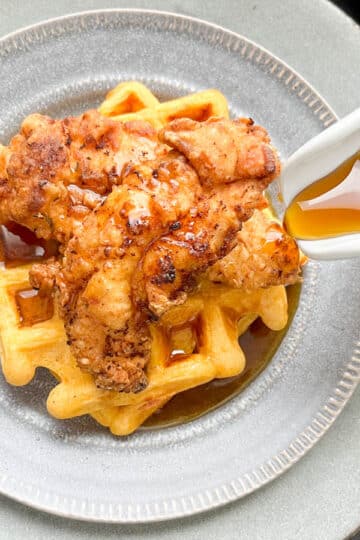
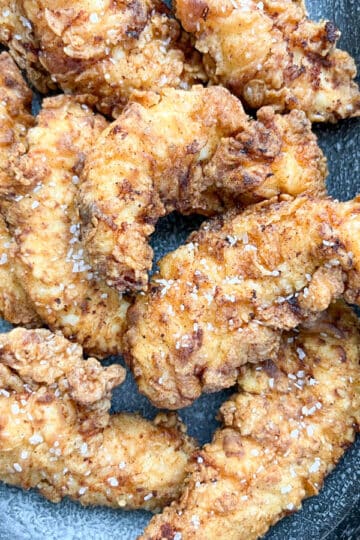

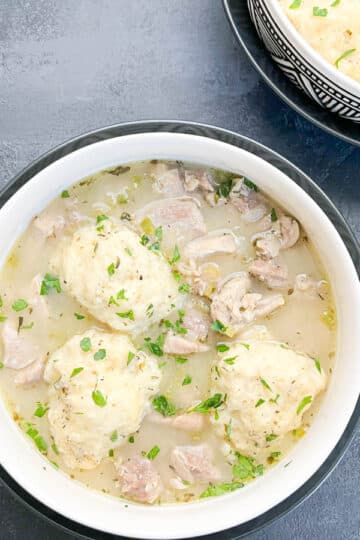
Thanks for visiting! Please feel free to leave a comment